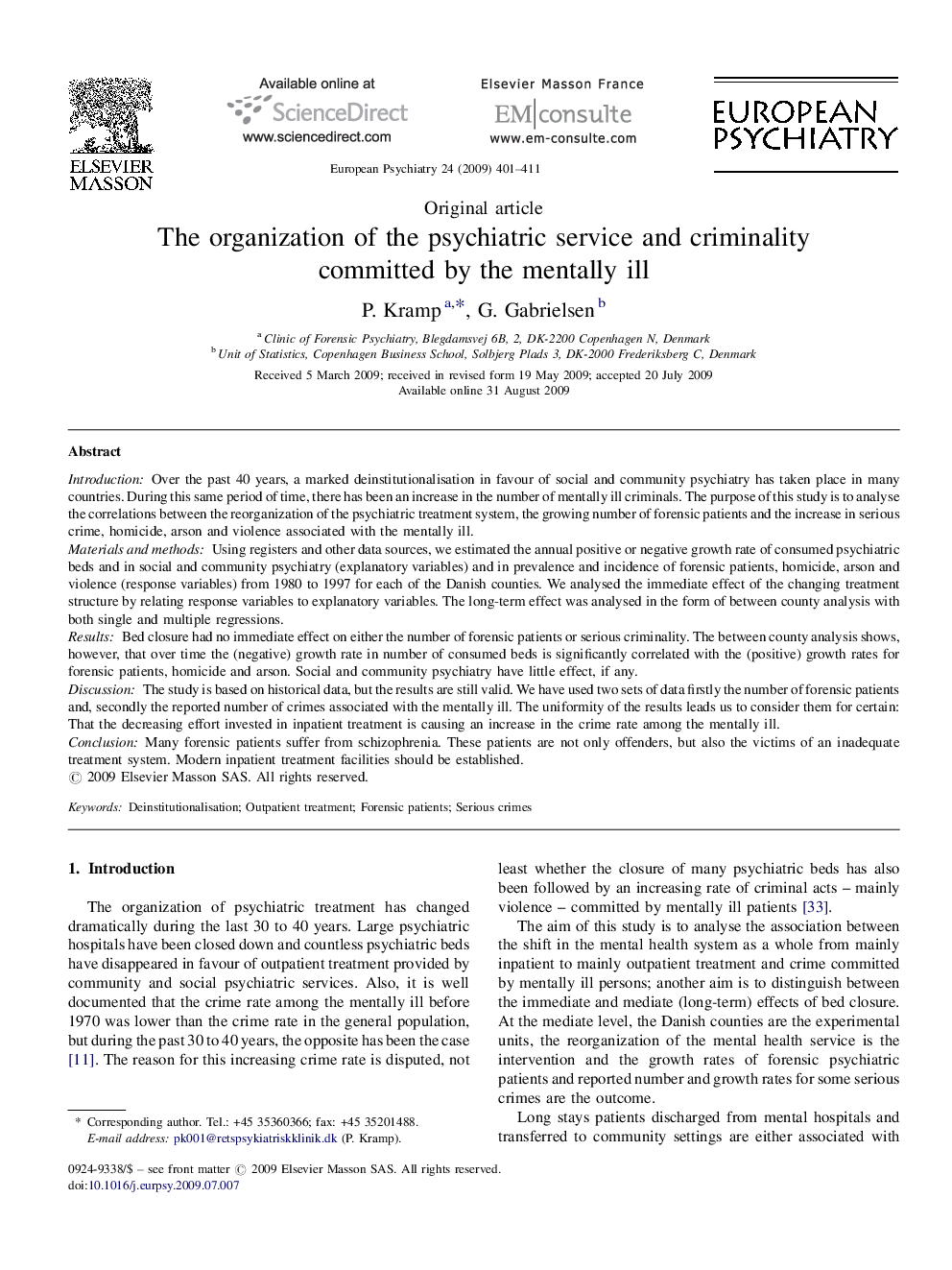| کد مقاله | کد نشریه | سال انتشار | مقاله انگلیسی | نسخه تمام متن |
|---|---|---|---|---|
| 6229433 | 1277344 | 2009 | 11 صفحه PDF | دانلود رایگان |

IntroductionOver the past 40Â years, a marked deinstitutionalisation in favour of social and community psychiatry has taken place in many countries. During this same period of time, there has been an increase in the number of mentally ill criminals. The purpose of this study is to analyse the correlations between the reorganization of the psychiatric treatment system, the growing number of forensic patients and the increase in serious crime, homicide, arson and violence associated with the mentally ill.Materials and methodsUsing registers and other data sources, we estimated the annual positive or negative growth rate of consumed psychiatric beds and in social and community psychiatry (explanatory variables) and in prevalence and incidence of forensic patients, homicide, arson and violence (response variables) from 1980 to 1997 for each of the Danish counties. We analysed the immediate effect of the changing treatment structure by relating response variables to explanatory variables. The long-term effect was analysed in the form of between county analysis with both single and multiple regressions.ResultsBed closure had no immediate effect on either the number of forensic patients or serious criminality. The between county analysis shows, however, that over time the (negative) growth rate in number of consumed beds is significantly correlated with the (positive) growth rates for forensic patients, homicide and arson. Social and community psychiatry have little effect, if any.DiscussionThe study is based on historical data, but the results are still valid. We have used two sets of data firstly the number of forensic patients and, secondly the reported number of crimes associated with the mentally ill. The uniformity of the results leads us to consider them for certain: That the decreasing effort invested in inpatient treatment is causing an increase in the crime rate among the mentally ill.ConclusionMany forensic patients suffer from schizophrenia. These patients are not only offenders, but also the victims of an inadequate treatment system. Modern inpatient treatment facilities should be established.
Journal: European Psychiatry - Volume 24, Issue 6, September 2009, Pages 401-411